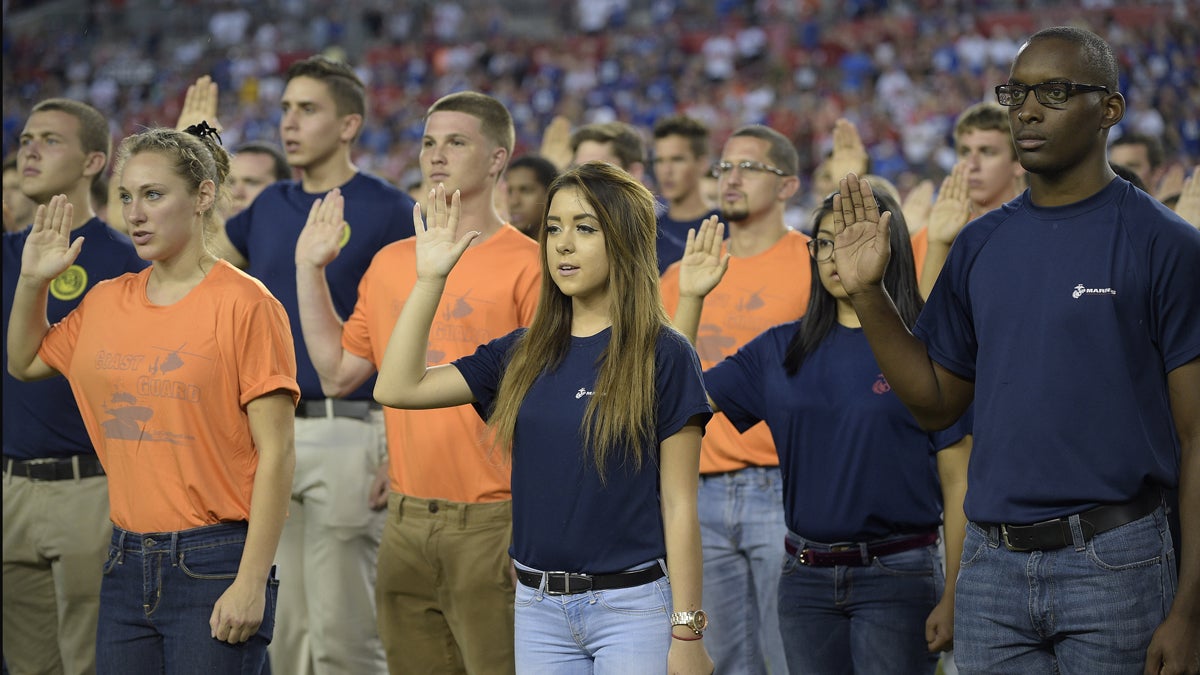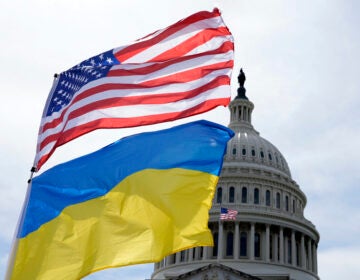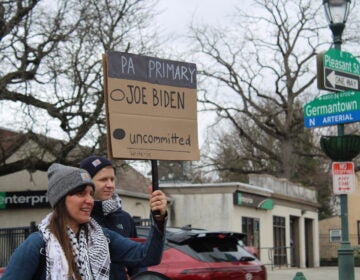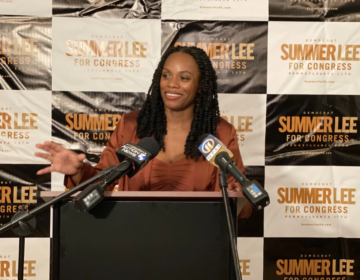Is it time to introduce military or community service for all 18-year-olds?

New military recruits take an oath during half time of an NFL football game between the Tampa Bay Buccaneers and the New York Giants Sunday, Nov. 8, 2015, in Tampa, Fla. (AP Photo/Phelan M. Ebenhack)
Should we introduce military or community service for 18-year-olds? I believe that the benefits outweigh the negatives, provided that the experience is made useful to these young people in a compulsory period of time between high school and university.
Military or community service for 18-year-olds used to be mandated in the United States, but its usefulness ended in 1973.
Some countries, including Israel, Mexico, Russia, and South Korea, still require young men, and in some places young women, to serve their countries for a period of time.
Peaceful Sweden is set to reintroduce conscription for the first time since 2010, and for the first time including women, due to the “new security situation” involving recent military activities in nearby Crimea and Ukraine.
There are those who consider that such service builds character and skills, and those who believe that it interferes with individual liberties.
Much depends upon the content of such service. In Britain, for example, when two years of service in the Army, the Air Force, or the Navy was compulsory for all 18-year-olds, much of what constituted national service was pretty useless makework: painting coal white, for example, to impress visiting military brass, or serving as domestic servants — sometimes known as batmen — to senior officers. But in some instances, there were real-world benefits, such as learning technical skills, computer know-how, and social interaction with a wide range of fellow inductees from different strata of society.
Those who oppose National Service believe that it’s not the best use of taxpayer money; that it is best done by government-run training schemes, or that it steals work from people who need it to support families. The obverse of this is that a large cadre of trained manpower makes for a battle-ready army, especially given that a mere 1 percent of Americans actually do the fighting in our several wars.
That’s why the term “conscientious objector” came into play during both world wars and the war in Vietnam. It applied to those who were bona fide pacifists or members of peace churches — Quakers, Mennonites, Seventh-day Adventists, and the like — who objected to the government forcing them to serve in a way they found unconscionable. But many objectors still served in more palatable, non-combatant roles — as medics taking care of mentally ill people in hospitals, for example, or as men who fought forest fires rather than foreign soldiers. Some did an enormous public service and drew attention and scrutiny to the pitiable conditions in which psychiatric patients were housed and treated.
In 1969, the selective service system of the United States introduced a lottery to determine who would be called to military service in the Vietnam War for men born between 1944 and 1950 — a serious gamble when considering that some 60,000 Americans lost their lives in that war. About 40,000 so-called draft dodgers fled to Canada, where they were classed as immigrants rather than as refugees. Many stayed in Canada after the war was over — presumably having learned certain Canadian idiosyncrasies, eh? — and having developed a passion for hockey.
Bernie Sanders dodged the draft by virtue of being a self-proclaimed pacifist. So did Donald Trump, because of alleged foot problems (one of which, according to Hillary Clinton, was caused by placing it in his mouth too often).
Not least of the benefits that compulsory service has is on discipline — on punctuality, on respect for people and institutions, and on eschewing drugs and gangs. The danger many see in conscription, I suppose, might have to do with potential for political indoctrination. Conscripted groups of young and impressionable men were prime targets for propaganda and coercion in the Soviet Union and in Nazi Germany.
Of course, one might note that today’s young men and women are already the target of propaganda in the form of fake news and social media.
There is AmeriCorps which, while not specifically aimed at 18-year-olds, does provide opportunities for some 80,000 people of all ages to volunteer public service in schools, health facilities, and community centers. Similarly, the Peace Corps offers two-year programs to volunteers of all ages and providing service mainly overseas to underserved populations.
So should we introduce military or community service for 18-year-olds? I believe that the benefits outweigh the negatives, provided that the experience is made useful to these young people in a compulsory period of time between high school and university. They might even return to the academic world with newfound maturity, a propensity for success, and a worldview far broader than they might otherwise have acquired in that time.
—
David Woods, Ph.D., is a Philadelphia-based medical writer and editor. A former editor in chief of the Canadian Medical Association Journal, he is the author of four books and more than 200 articles, editorials, and reviews in peer-reviewed health care publications.
WHYY is your source for fact-based, in-depth journalism and information. As a nonprofit organization, we rely on financial support from readers like you. Please give today.





